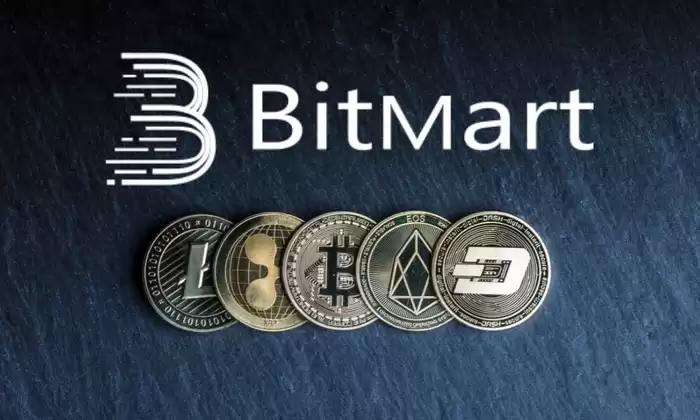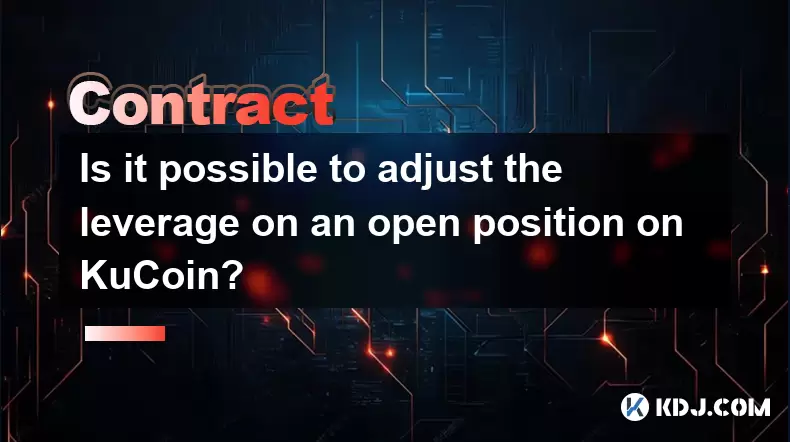-
 Bitcoin
Bitcoin $117800
0.49% -
 Ethereum
Ethereum $4432
0.55% -
 XRP
XRP $3.106
1.07% -
 Tether USDt
Tether USDt $1.001
0.01% -
 BNB
BNB $835.8
1.74% -
 Solana
Solana $189.1
2.72% -
 USDC
USDC $0.9999
-0.01% -
 Dogecoin
Dogecoin $0.2302
3.65% -
 TRON
TRON $0.3485
-0.69% -
 Cardano
Cardano $0.9212
-0.91% -
 Hyperliquid
Hyperliquid $46.97
1.45% -
 Chainlink
Chainlink $22.77
5.61% -
 Stellar
Stellar $0.4284
0.82% -
 Sui
Sui $3.766
2.82% -
 Bitcoin Cash
Bitcoin Cash $583.5
-0.82% -
 Ethena USDe
Ethena USDe $1.001
0.03% -
 Hedera
Hedera $0.2512
2.78% -
 Avalanche
Avalanche $24.18
2.27% -
 Litecoin
Litecoin $120.2
2.10% -
 Toncoin
Toncoin $3.450
1.96% -
 UNUS SED LEO
UNUS SED LEO $9.412
-0.92% -
 Shiba Inu
Shiba Inu $0.00001298
2.35% -
 Uniswap
Uniswap $10.99
3.75% -
 Polkadot
Polkadot $3.962
3.09% -
 Dai
Dai $1.000
0.00% -
 Bitget Token
Bitget Token $4.643
1.38% -
 Cronos
Cronos $0.1511
-0.08% -
 Ethena
Ethena $0.7246
3.18% -
 Monero
Monero $254.9
7.90% -
 Pepe
Pepe $0.00001100
3.32%
BitMart Coin-margined Contract Tutorial
BitMart's coin-margined contracts empower traders to leverage advanced strategies and potentially maximize profits, while adhering to prudent risk management practices for successful trading.
Dec 01, 2024 at 08:49 pm

BitMart Coin-Margined Contract Tutorial: A Comprehensive Guide to Advanced Trading Strategies
BitMart, a leading global cryptocurrency exchange, offers a range of advanced trading features, including coin-margined contracts. These contracts enable traders to magnify their potential profits by utilizing leverage, but they also come with inherent risks. This comprehensive tutorial will provide a detailed guide to BitMart's coin-margined contract trading, empowering traders to navigate this complex yet potentially lucrative market effectively.
Before delving into the specifics, it's crucial to lay a solid foundation by defining key concepts:
- Coin-margined Contracts: These contracts are financial instruments that allow traders to speculate on the future price movements of an underlying cryptocurrency, such as Bitcoin or Ethereum. Unlike traditional futures contracts, coin-margined contracts are collateralized using the same cryptocurrency that serves as the underlying asset. This feature eliminates the need for cross-currency conversions, reducing the risk of slippage and improving overall efficiency.
- Leverage: Leverage is a double-edged sword that can amplify both profits and losses. By utilizing leverage, traders can control a larger position size than their initial investment. For instance, with 5x leverage, a trader can control a position worth $10,000 with an initial investment of only $2,000. However, it's essential to use leverage cautiously, as it can magnify not only profits but also losses.
- Risk Management: Coin-margined contract trading involves inherent risks, and effective risk management is paramount for successful trading. Key risk management strategies include setting stop-loss orders to limit potential losses, diversifying trading portfolios to reduce exposure to any single asset, and adhering to a disciplined trading plan that aligns with individual risk tolerance.
- Trading Interface: BitMart's user-friendly trading interface seamlessly integrates advanced features with a user-centric design. The interface enables traders to monitor market trends, place orders, and manage their positions with ease. Intuitive navigation and customizable settings cater to traders of all skill levels, fostering a conducive trading environment.
Step-by-Step Guide to Coin-Margined Contract Trading on BitMart
To commence coin-margined contract trading on BitMart, traders should follow these steps meticulously:
- Create a BitMart Account: If you haven't already, register for a BitMart account. The process involves providing basic personal information and completing the necessary verification steps. Once your account is active, you can access the vast array of trading features offered by BitMart.
- Fund Your Account: Before engaging in contract trading, you must fund your BitMart account with the desired cryptocurrency. BitMart supports a diverse range of cryptocurrencies, including Bitcoin (BTC), Ethereum (ETH), and Tether (USDT). Choose the cryptocurrency aligned with your trading strategy and transfer funds to your BitMart wallet.
- Navigate to the Contract Trading Section: Log in to your BitMart account and navigate to the "Contracts" section. Here, you will find a comprehensive overview of available contract markets, including the underlying asset, leverage options, and contract specifications.
- Select a Trading Pair: Choose the trading pair you wish to trade. BitMart offers a diverse selection of trading pairs, enabling traders to capitalize on price movements across various cryptocurrencies. Carefully consider the market conditions, your trading strategy, and risk tolerance when selecting a trading pair.
- Set Leverage and Margin: Determine the appropriate leverage level for your trading strategy. Higher leverage magnifies potential profits but also amplifies risks. Choose the leverage level that aligns with your risk tolerance and trading experience. Subsequently, set the margin amount, which represents the collateral required to open and maintain your position.
- Place Your Order: Once you have configured the leverage and margin settings, you can place your order. BitMart offers various order types, including limit orders, market orders, and stop-loss orders. Select the order type that suits your trading strategy and enter the desired quantity.
- Monitor Your Position: After placing your order, it's crucial to monitor your position closely. Track the price movements of the underlying asset and adjust your strategy accordingly. Utilize stop-loss orders to mitigate potential losses, and consider adjusting your leverage or margin if market conditions warrant it.
- Close Your Position: When you are satisfied with your profits or wish to exit the trade, close your position. BitMart provides seamless order cancellation and position closing mechanisms, enabling traders to conclude their trades efficiently and securely.
- Withdraw Your Funds: Once you have closed your position and realized your profits or losses, you can withdraw your funds from
Disclaimer:info@kdj.com
The information provided is not trading advice. kdj.com does not assume any responsibility for any investments made based on the information provided in this article. Cryptocurrencies are highly volatile and it is highly recommended that you invest with caution after thorough research!
If you believe that the content used on this website infringes your copyright, please contact us immediately (info@kdj.com) and we will delete it promptly.
- Kazakhstan's Crypto Leap: Bitcoin ETF and Central Asia's Digital Finance Future
- 2025-08-13 12:45:19
- BlockDAG Presale Blazes Past $371M: Fundraising Frenzy Fuels Crypto Sensation
- 2025-08-13 13:05:21
- Meme Coins: Chasing the 2025 Surge – Which Will Moonshot?
- 2025-08-13 10:25:23
- Bitcoin's Wild Ride: Rally, Pullback, and What's Next
- 2025-08-13 10:25:23
- Bitcoin, Bitmax, and Institutional Demand: A New Era of Crypto Investment
- 2025-08-13 10:45:12
- Solana, ROAM, and Airdrops: What's the Buzz in 2025?
- 2025-08-13 11:35:13
Related knowledge

Is it possible to adjust the leverage on an open position on KuCoin?
Aug 09,2025 at 08:21pm
Understanding Leverage in KuCoin Futures TradingLeverage in KuCoin Futures allows traders to amplify their exposure to price movements by borrowing fu...

What cryptocurrencies are supported as collateral on KuCoin Futures?
Aug 11,2025 at 04:21am
Overview of KuCoin Futures and Collateral MechanismKuCoin Futures is a derivatives trading platform that allows users to trade perpetual and delivery ...

What is the difference between realized and unrealized PNL on KuCoin?
Aug 09,2025 at 01:49am
Understanding Realized and Unrealized PNL on KuCoinWhen trading on KuCoin, especially in futures and perpetual contracts, understanding the distinctio...

What different order types are available to use on KuCoin Futures?
Aug 13,2025 at 11:35am
Understanding Order Types on KuCoin FuturesKuCoin Futures offers a comprehensive range of order types to accommodate different trading strategies and ...

How does KuCoin Futures compare against Binance Futures in terms of features?
Aug 09,2025 at 03:22am
Trading Interface and User ExperienceThe trading interface is a critical component when comparing KuCoin Futures and Binance Futures, as it directly i...

How can I manage risk when applying high leverage on KuCoin?
Aug 13,2025 at 11:35am
Understanding High Leverage and Its Implications on KuCoinHigh leverage in cryptocurrency trading allows users to control larger positions with a rela...

Is it possible to adjust the leverage on an open position on KuCoin?
Aug 09,2025 at 08:21pm
Understanding Leverage in KuCoin Futures TradingLeverage in KuCoin Futures allows traders to amplify their exposure to price movements by borrowing fu...

What cryptocurrencies are supported as collateral on KuCoin Futures?
Aug 11,2025 at 04:21am
Overview of KuCoin Futures and Collateral MechanismKuCoin Futures is a derivatives trading platform that allows users to trade perpetual and delivery ...

What is the difference between realized and unrealized PNL on KuCoin?
Aug 09,2025 at 01:49am
Understanding Realized and Unrealized PNL on KuCoinWhen trading on KuCoin, especially in futures and perpetual contracts, understanding the distinctio...

What different order types are available to use on KuCoin Futures?
Aug 13,2025 at 11:35am
Understanding Order Types on KuCoin FuturesKuCoin Futures offers a comprehensive range of order types to accommodate different trading strategies and ...

How does KuCoin Futures compare against Binance Futures in terms of features?
Aug 09,2025 at 03:22am
Trading Interface and User ExperienceThe trading interface is a critical component when comparing KuCoin Futures and Binance Futures, as it directly i...

How can I manage risk when applying high leverage on KuCoin?
Aug 13,2025 at 11:35am
Understanding High Leverage and Its Implications on KuCoinHigh leverage in cryptocurrency trading allows users to control larger positions with a rela...
See all articles

























































































